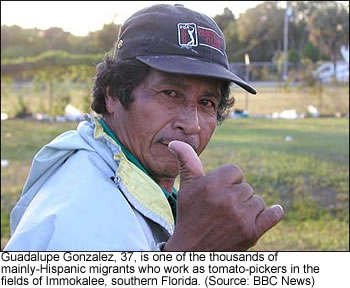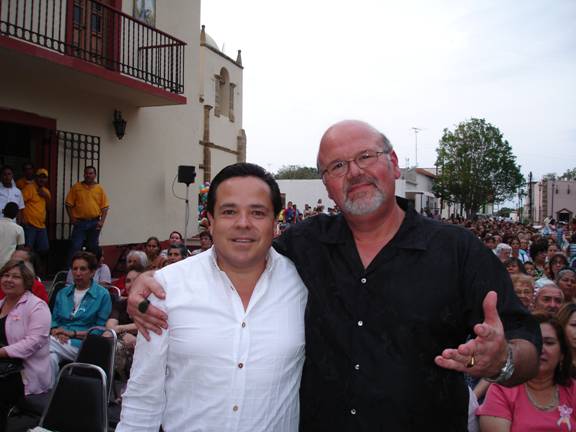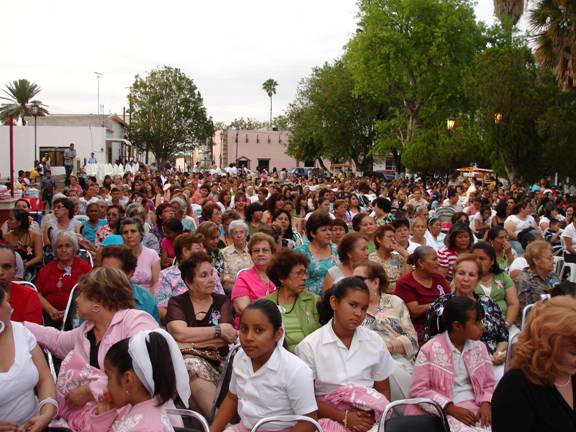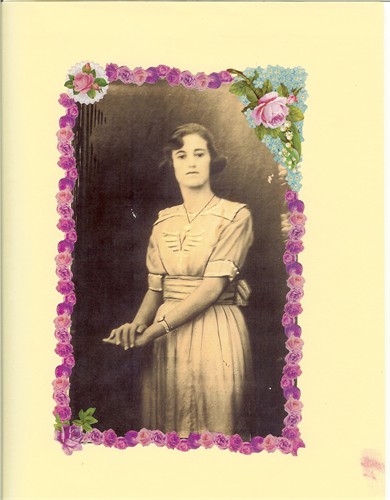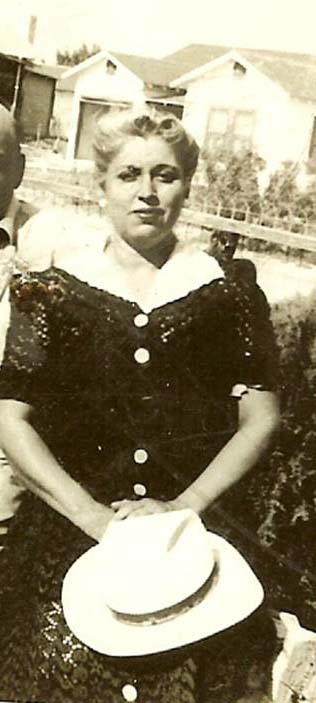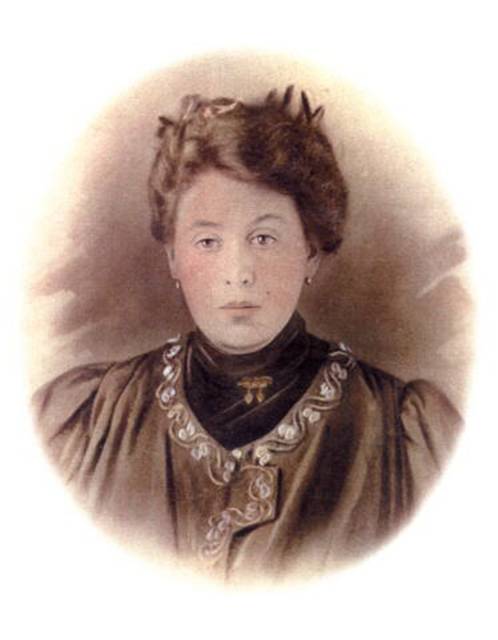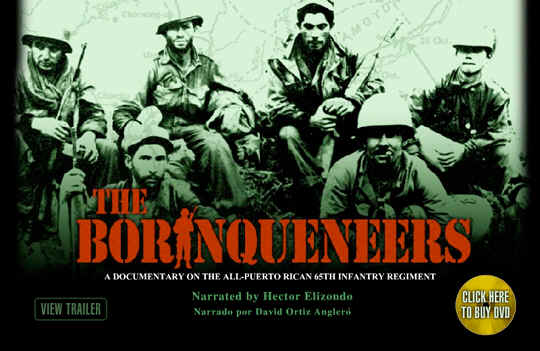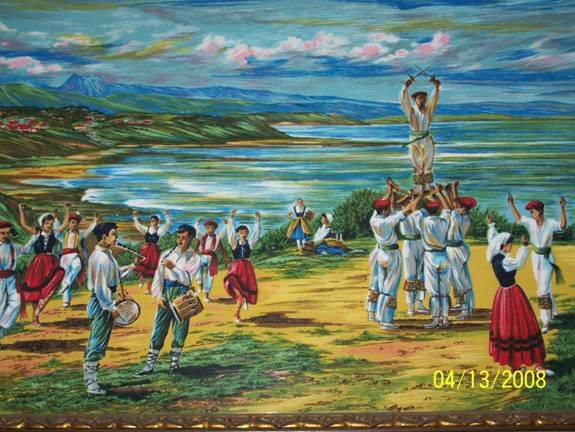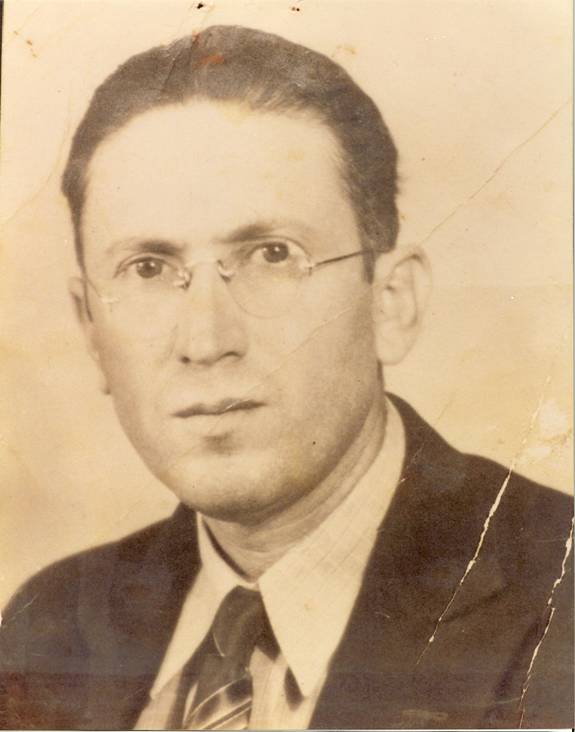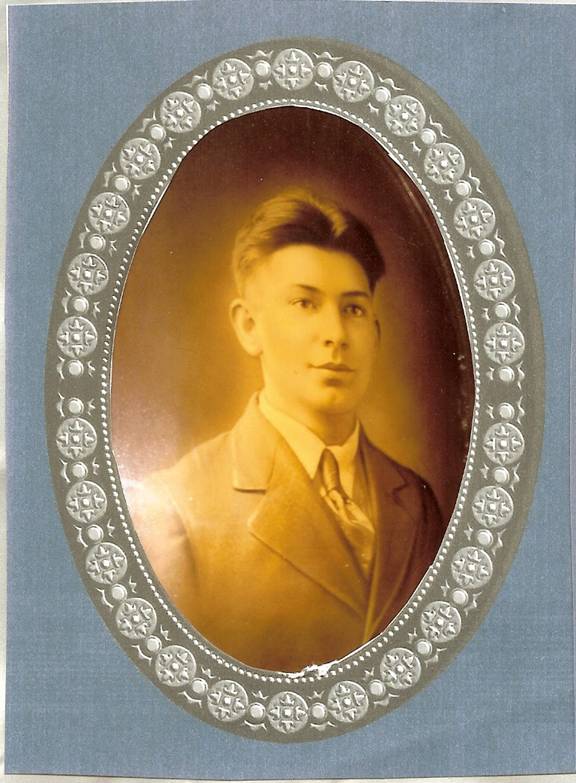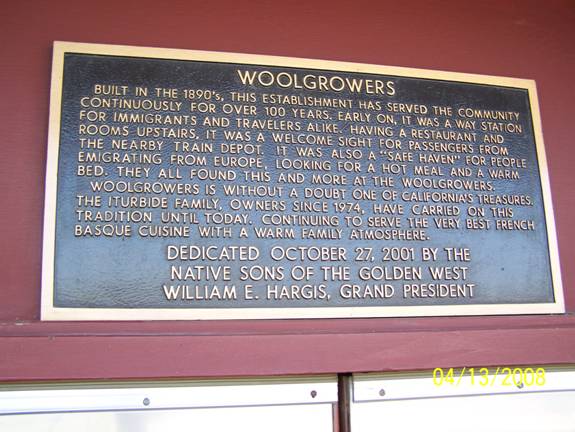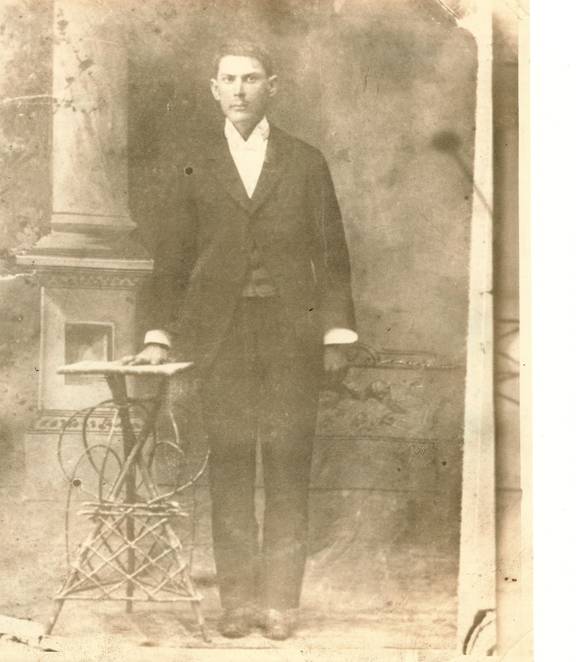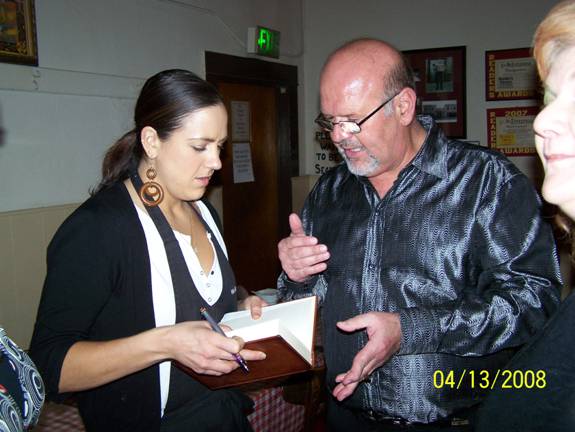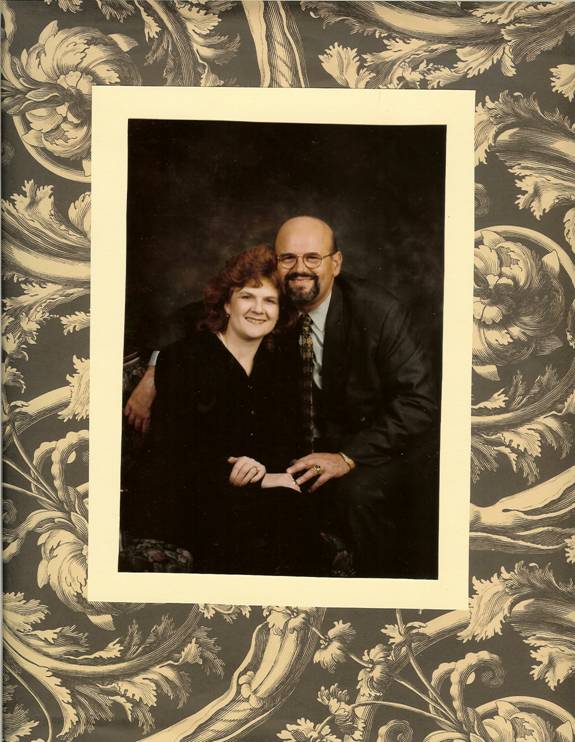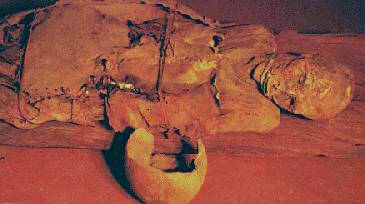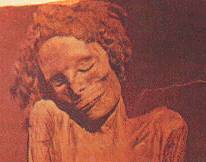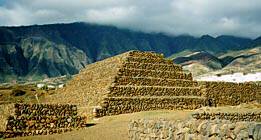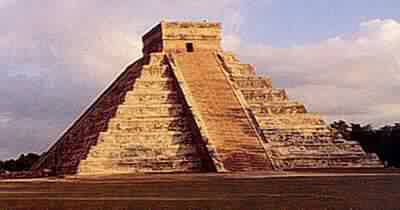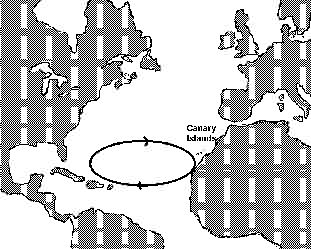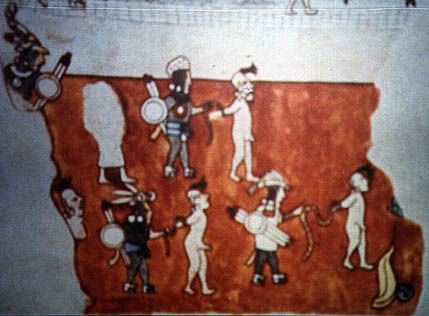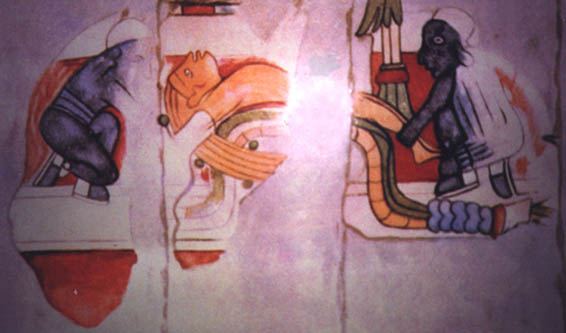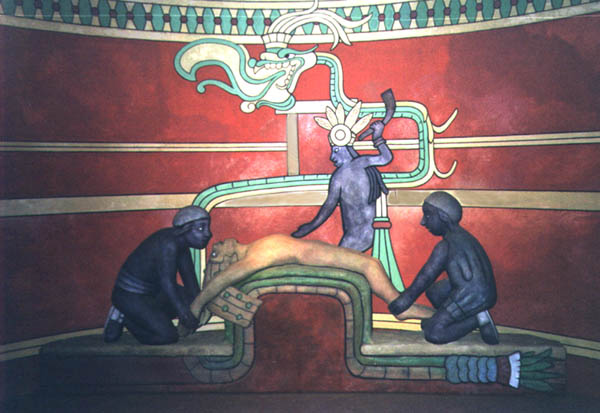|
The
Treaty of Guadalupe Hidalgo, enacted 134 years ago to affirm peace and
friendship between the United States and Mexico, gave birth to a unique “person” in the Americas—the
Mexican American or Chicano.1
As subsequent events
bear out, the Treaty also generated a mass of litigation, from trial court to Supreme Court. However, the nature of these actions almost exclusively asserted only one of the rights
guaranteed specifically to the Mexicans who elected to stay on this side
of the new border, the first Mexican Americans.
THE EARLY LITIGATION
The Tre
at
y of Guadalupe Hidalgo, in spite of its years, is a living document. It
provides guarantees which are protected not only on a domestic level but
internationally as well. Within a relatively new human rights system, the Treaty represents a valuable and practical tool in seeking redress for viol
at
ions of these rights. Unfortunately, the Treaty has been relegated to a land grants document rather than
pursued as a viable alternative and foundation for sound
human rights assertions in domestic and international
tribunals.
From the earliest
cases which ensued almost from the moment the Treaty was signed until the more recent cases which deal with American Indian
claims,2 the right to “property” has been the dominant
focus in challenging or citing to the Treaty. The ownership of land, for a number of
reasons, was uppermost in
the minds of the inhabitants in the lands taken from
Mexico
by the
United States
. Land meant a livelihood, if not wealth, prestige, a patrimony, certainly the means to sustain life itself.
The Mexican
Americans, robbed, cheated, taxed, beaten, murdered and lynched, or otherwise driven off their lands (See
Appendix A), went into the U.S. courts only to find either that
they had no protected titles where Texas was concerned3 or
that
the
Treaty, instead of validating previous land claims had only given claimants the right to seek
validation or clarification in U.S. tribunals.4 As one court saw it, Mexicans in the
ceded territories got merely the status of citizenship under the Treaty; they gained no special
guarantees under it.5
Article IX of the
Treaty specifically cites the right to “liberty and property.”6
At the time, the right to challenge land claims or validate titles was an important and perhaps the crucial issue, often a
life-and-death matter, to the early Mexican Americans. However, we assert that
the Treaty conveyed—under the rubric of the right “to liberty” and by
virtue of other documents specifically incorporated into the Treaty—a whole range of values and individual guarantees which apparently
were not then considered assertable theories in litigation but which have since become both national and intern
at
ional standards of law.
Moreover, while the
right to property and claims stemming from it exclude
Texas
,
U.S.
citizenship was afforded all Mexicans within the territories who did not
elect to retain Mexican citizenship by the end of one year. The other
rights, to life and liberty, in other words, adhered to all Mexicans who
remained on the
U.S.
side of the new border: in effect, these guarantees were extended not
only to individuals but to the group clearly identifiable by their n
at
ional origin as Mexican/Americans. The significance of this factor will
become clearer in the light of subsequent developments in the law.
Because land
constituted the very sustenance of life in the society of the 1800s, it
is understandable th
at
claims to property depended on assertions of title, adverse possession,
riparian rights, community ownership, and the like. In time, the
significance of land has given way to the right to life and liberty as
the primary values in affecting redress for wrongs against civil and
human rights, for example, where denial of one’s civil rights results
in de
at
h
at
the hands of another, code law supplants the direct murder charge. See
18 U.S.C.A. §242.
Chicano claims for
justice are basically
at
an impasse. Claims related to property rights obviously have faltered not only in the courts but
also in the public conscience. The efforts of Reies Tijerina and the
Alianza Federal de Mercedes Libres in the 1960s’ land claims movement
in
New Mexico
sought redress in the courts and in public opinion, even in the halls of
the United Nations7—to no avail.
What
this paper urges is a new approach, retracing many of the same
documents, but reexamining them in light of the development of intern
at
ional systems for the protection of human rights. The inter-American
system, in particular, did not exist as a forum even two decades ago.
Now, by reviving the Treaty of Guadalupe Hidalgo along modern conceptual lines of human rights,
Mexican Americans may, in fact, have a new opportunity to redress
decades-old grievances.
THE RIGHT TO LIFE AS A PROTECTED HUMAN RIGHT
We present here a
review of the basic documents providing us with the framework to
understand th
at
“life and liberty” were perceived as human rights, each part of the
other,
at
the time of the signing of the Treaty of Guadalupe
Hidalgo
with the goal in mind of bridging these views with the modern documents
on human rights. The purpose, of course, is to provide an overall
analysis of
U.S.
and Mexican documents, with greater
attention paid to the Mexican sources which are less known in the
United States
.
America
’s commitment to basic individual
rights is embodied first in the Declaration of Independence, although these principles also appear in the
earlier “Declarat
ion and Resolves of the First Continental Congress”.8 The
second paragraph of the
Declaration of Independence asserts that
,
“We hold these
truths to be self-evident, that
all men are created equal, that
they are endowed by their Creator with certain unalienable Rights, that
among these are Life,
Liberty
, and the Pursuit of Happiness.”9
Not till 1868,
however, did the
United St
at
es
constitutionally bestow upon the concept of “life, liberty and
property”
the status of protected individual rights, interdependent facets of the
fundamental equality and worth of the human person. The 14th
Amendment reads:
§1. All persons
born or nationalized in the
United States
and subject to the jurisdiction thereof, are citizens of the
United States
and of the State wherein they reside. No
State ... shall ... deprive any person of life, liberty or property, without
due process of law, nor deny to any person within its jurisdiction the
equal protection of the laws.10 (Emphasis added.)
These two tenets,
taken together with Article 11 §2 (2) which places tre
at
y making authority in the President11 and Article VI (2)
which asserts th
at
the Constitution of the United States and its laws and Treaties shall be “the supreme law of the land ...12
indicate that
pre-1848 in the United States, “life, liberty and property” were understood as a whole, each
element complementing and encompassing the other. Later Statutes, such as 18 U.S.C.A. §242 and 42 U.S.C.A. §1983, reinforce, this
view.13 Under these laws, a U.S. citizen may seek redress in
court against viol
at
ions of Constitutional and Treaty rights involving Government officials or agents.
MEXICAN PERCEPTIONS OF BASIC RIGHTS
Mexican views on the
right to life and liberty are well-rooted in official documents of the
Republic both prior and subsequent to 1848. Citing the seminal nature of the
Declaration of Rights of Man and Citizen by the National French Assembly in 1789 to Mexican constitutional thought, Noriega,
in tracing the sources of individual rights in the Mexican Constitution
of 1917, says,
... the Law, and
for that
matter, the laws, enacted in chapter one of our Constitution, make crystal
clear the challenge stemming from that
great
dynamic of the natural law of a
Nation: that
law which has been evolving in the heat
of the struggle begun in 1810, which fomented in 1814 and became
incorporat
ed in 1824 in the life of the Republic; felt and absorbed in 1847 and
which became flesh and spirit in 1857.14
Noriega reinforces
the notion posited herein, that
life, liberty and property are essentially interrelated to each other and to the derivative rights which become successively more specific to social, economic
and cultural needs of an increasingly complex world.
Noriega states,
... I shall seek
to enumerate the most salient rights which the St
at
e should recognize and protect: the right to life, to existence; the
right to physical freedom, the right to bodily integrity, the right to
be master of one’s own destiny.15
In the prior quote,
Noriega referred to a series of historic documents, for one, the
Constitution of 1824, which averred in Article 24,
The happiness of
a people and of each individual consists in the mutual enjoyment of
equality, security, property, and liberty. The preservation as a whole of these rights is the goal of Government and the only
objective of political bodies.16
Furthermore, in the
Actas de Reformes of 1847, Article 5 asserts, “...the declaration that
a single law would insure the guarantees of liberty, security, and
equality in favor of all citizens of the Republic...17
(Emphasis added.)
Finally, in the
Constitution of 1857, Article 14 stipulates,
No one shall be
deprived of life, liberty or property without (due process) before
tribunals already established which conform with the essential
procedural steps and comply with the laws previously enacted toward that
end.18
The Treaty of Guadalupe Hidalgo incorporates language reflecting much the same conceptual framework of these
Mexican documents and by reference those Statutes and Treaties more familiar to the
United States
. Further on, a review of the inter-American human rights documents
demonstrates that
an unbroken line exists between the Guadalupe Hidalgo and 20th century
human rights law, a fact that
has yet to be tested after nearly a century and a half.
THE RIGHT TO LIFE IN THE TREATY OF GUADALUPE
HIDALGO
The formulation of the Treaty, as early and then revised texts
indicate, progressed from a full recognition of inalienable rights of those
already on the northern side of the new border, citing longstanding
intern
at
ional agreements, to a well-excised document, grudgingly granting the
new Mexican/Americans the most minimal protections.
However, as we shall
see, by reference to
U.S.
documents, other treaties, the Treat
y of Guadalupe Hidalgo itself, and to some extent a suppressed protocol,
the full scope of rights encompassed in the Treaty will become apparent.
Moreover, a review
of the inter-American human rights documents demonstrates that
an unbroken line exists between the Treaty and today. This fact has not been recognized nor, consequently, put
into practice in litigation since 1848.
Article VIII, in
para. 1, identifies as a group, “Mexicans now established in
territories previously belonging to
Mexico
...” and adds in para. 2, “...who have remained in the said
territories (beyond the year from the date ratifications were exchanged) without having declared their intention to retain
the character of (citizens of
Mexico
) shall be considered citizens of the
United St
at
es
.”19
The grant of citizenship, therefore, is not made with regard to propertied
st
at
us or place of residence: that
group of persons of Mexican origin who simply decided to stay behind the
new boundary line became citizens by operation of Treaty law.
However, Article IX
declares that
,
(These)
Mexicans... shall be incorporated into the Union of the United
States and be admitted,
at
the proper time (to be judged by the Congress of the United States) to the enjoyment of all the rights of
citizens of the United St
at
es according to the principles of the Constitution; and in
the meantime shall be maintained and protected in the free enjoyment of
their liberty and property, and secured in the free exercise of their
religion without restriction.20 (Emphasis added.)
Both conditions, the
tacit election to assume U.S. citizenship after one year and the
admission of the territory into statehood, are since fully complied with by operation of law, although in the case of New Mexico, it took more than half a
century before it was finally admitted as a state. Congress, in effect, withheld full citizenship from the
Mexican/Americans by setting a vague point in the future (“
at
the proper time”) for grant of citizenship.21 Congress’
fears are clear from a reading of the original text of Article IX, as
follows:
Those Mexicans
(who by operation of law become U.S. citizens under Article VIII) will be incorporated into the Union of the United St
at
es and will be admitted as soon as possible in conformity with the
Federal Constitution and to the enjoyment of full rights of U.S.
citizens and meanwhile shall be maintained and protected in the
enjoyment of their liberty, their property and of the civil rights which
they now have according to Mexican law.22 (Emphasis added.)
Article IX
originally also provided:
... with respect
to political rights, their condition shall be on an equality with that
of the inhabitants of the other territories of the
United States
(and
at
least equally as good as th
at
of the inhabitants of
Louisiana
and the
Floridas
) when (they) became territories of the
United States
.23
Thus, the explicit
extension of protections already in effect by virtue of Mexican law as
to personal (human), property and civil rights were diluted. And, by
deleting reference to the
Floridas
’ treaties, Congress also sought to curtail extension of treaty
precedents by reference to the
Louisiana
and
Floridas
’ treaties. The words in Article IX, as to “equality with that
of the inhabitants of the other territories,” and “
at
least as good,” apparently appeared too generous.
However, two
U.S.
and one Mexican commissioner drafted and signed a protocol on
May 26, 1848
, setting forth the understanding which each side had of the revised
document. The protocol stipulates that
Article IX reflects and in effect incorporates Article III of the Louisiana Treaty (April 30, 1803) as well as the intent of Article VI in the Floridas
Treaty (February 27, 1819). 24 The three commissioners affirmed that
the U.S. Congress, by substituting Article III of the Louisiana Treaty for Article IX of Guadalupe Hidalgo,
... has in no way
sought to diminish what
was agreed to in Article IX. ...As a consequence, all the freedoms and
guarantees of a civil, political, and religious nature which the inhabitants of the ceded territories would have under
Article IX, the same without difference are contained in the substituted
article.25
Controversy
surrounds the drafting of the Treaty as well. N. Trist, the
U.S.
negotiator, had been deprived of portfolio before entering into negotiations with Mexican authorities. The protocol itself was suppressed and
never made a part of the Treaty. Despite this questionable genesis, the Treaty was accepted by Congress, amended, and
ratified on U.S. Independence Day,
July 4, 1848
. All but one question is moot: Does the Treaty contain protections of relevance to current human rights issues or is
it a dead letter?
THE RIGHT TO LIFE IN INTERNATIONAL HUMAN RIGHTS
DOCUMENTS
The concept that
“life” itself is a right inherent in the nature of human beings seems so obvious th
at
it hardly requires documentat
ion. Yet, from this essential notion are derived, as Contardo indicates, so many related protections that
human existence as a value in itself becomes the starting point for
the projection of a whole series of affairs and conditions within a
number of intern
at
ional documents.
Contardo, writing in
the Revista Chilena de Derecho, notes how often the right to life is
omitted as a specific reference in many if not most constitutional
documents: though it seems so apparent, the right to life, as the most
immediate possession of oneself, must be memorialized, especially in light of
“the new multiple forms of
at
tack” humanity now faces.
Contardo adds,
As a consequence
of (the right to life’s) gaining constitutional recognition, there may
be derived numerous legal means to protection this right, to sanction
its unjust violation, and to create proper conditions for its exercise.26
“From this root
sprout other concerns,” (De alli brotan otras exigencies) Contardo
asserts, which demand the creation of structures within society to protect and augment the assurance
and protection of human rights such as medical care, social security,
police protection, employment, even economic stability:
No one can be
barred from the exercise of these rights, because to do so indirectly
at
tacks one’s right to life.27
The United Nations Charter, that
momentous document in the whole history of world affairs, itself does
not specifically assert a “right to life”, rather it characterizes its
States Party to the Charter as, “Determined ... to reaffirm faith in
fundamental human rights and in the dignity and worth of the human
person.”28
More to the point is
the Universal Declaration of Human Rights, a derivative document of the UN Charter. Several articles specify that
life is a protected value and elaborate its many ramifications into society.
Article 3 cites the
right to “life, liberty and the security of person”; 4, denounces
slavery and any form of forced servitude; 5, condemns “...torture,
cruel, inhuman or degrading treatment or punishment”; 7, entitles the person “to equal protection of
the law”; 8, 9, and 10, assert rights to effective remedies before
competent tribunals, fair and public hearings by impartial tribunals,
and freedom from arbitrary arrest, detention or exile; 25, promotes the
right to a decent standard of living, and 27, seeks progress for all by
participation in or benefiting from cultural, artistic and scientific progress.29
Of immediate relevance to human rights in the
Americas
is the Declaration of Rights and Duties of Man, adopted by the Organization of American States in Bogotá in 1948, which is also quite explicit. The introductory
paragraphs assert basic assumptions about “the dignity of the
individual” and the generic nat
ure of “life in human society...” The Preamble adds substance and
depth to the “life” value, promoting culture as the highest social
and historical expression of ... spiritual development ...it is the
duty of man to preserve, practice and foster culture by every means
within his power.30
Several articles
assert a series of related rights: I, “life, liberty and security of person”; II, equality
of all persons before the law without distinction; XI, preservation of health and well-being; XIII, the “benefits of culture”; XVII,
the recognition of a juridical personality and of civil rights; XVIII,
the right to a fair trial; XXV, protection from arbitrary arrest, and
XXVI, due process of law.31
In the Statute of the Inter-American Commission on Human Rights which was approved
in 1960, Article 2 assumes by reference the listing of rights as set
forth in the American Declaration of the Rights and Duties of Man. In Article 9 and 9 (bis), among the
functions and powers vested in the Commission is th
at
it pay “particular
attention to observance” of certain of the rights cited in the American
Declaration, including the ones cited in the preceding paragraph (except for
Articles XI and XIII which the author added).32
Finally, the Regulations of the Commission, approved in October 1960, places the Commission
under the governance of the OAS Charter with its functions determined by
the Statute while its scope of goals and activities derive from the American
Declaration of Rights and Duties of Man. The full impact of the Commission’s
powers is spelled out in following sections. The significance to Mexican
American needs and aspirations will also become apparent.33
Reflecting
its derivation from the American Declaration and other human rights documents, the American Convention on Human
Rights further enhances the understanding of “right to life” as an
inherent human value and societal goal. The Convention, of course, is of
crucial importance, as we shall discuss, with respect to the procedural,
administrative and juridical system now established in the
Americas
.
Because
of the particular focus of this paper on inter-American human rights,
specific references within the American Convention which fall into the
general penumbra of “life”-related rights are reviewed as follows:
Preamble
...the essential rights of man are not derived from one’s being
a n
at
ional of a certain stat
e, but are based on
at
tributes of the human personality; and they justify international
protection...complementing the protection provided by the domestic
law of the American states.
Article 4.1.
Every person has the right to have his life respected...No one
shall be arbitrarily deprived of his life.
Article 5.1.
Every person has the right to have his physical, mental and moral
integrity respected.
Article 7.1.
Every person has the right to personal liberty and security.
Article 8.1.
Every person has the right to a hearing... for the determination of his rights and obligations of a civil, labor, fiscal, or any other nature.
Article 11.1.
Everyone has the right to have his honor respected and his
dignity recognized.
Article 24.
All persons are equal before the law. Consequently, they are
entitled, without discrimination, to equal protection of the law.
Article 25.
Everyone has the right to simple and prompt recourse, or any
other effective recourse, to a competent court or tribunal for
protection against acts that
violate his fundamental rights.34
Under the American
Convention, Article 41 reflects the same functions as Article 9 and 9 (bis)
in the St
at
ute, with an important distinction between communications (complaints) and petitions. Submission of communications to the Commission and cases to the Court of Human Rights vary
decidedly in regard to restrictions.
Under Article 44,
“Any person or group of persons, or any non-Governmental entity legally
recognized in one or more member states of the Organization, may lodge petitions with this Commission containing denunciations or
complaints of violatin of this Convention by a State Party.”35 (Emphasis added.) To submit a case before the
Court, however, only a State Party or the Commission has such right under Article 61.36
Where communications involve allegations by one St
at
e Party against another, Article 45 requires that
at
the time a State Party files its instrument of ratification of the Convention, it include a statement recognizing the competence of the Commission to consider such
communications before the Commission will accept a State Party communication against another stat
e party; similarly, under Article 62, the competence of the Court of
Human Rights must be recognized by a State Party before decisions of the Court become binding upon th
at
State Party.37
An Article 44
petition has a series of hurdles to overcome before receiving full
Commission
attention. Article 46, §1, requires the exhaustion of domestic remedies
and submission of the petition within six months of the date “the party alleging viol
at
ion of his rights was notified of the final judgment.”38
An Article 44
petition must contain the name, nationality, profession, domicile, and sign
at
ure of the petitioners or the legal representative. The requirements for exhaustion and six months’ period need not
apply where, under Article 46, §2, there are no domestic remedies nor
due process afforded by the state concerned in regard to the right
allegedly violted, the party making the allegation has been
denied access to the remedies or prevented from
exhausting them, or there has been unwarranted delay in obtaining a
final judgment.
If Article 46
requirements are not met, the facts do not tend to establish a violation, or the petition is “manifestly groundless or substantially like
another case already studied by the Commission or another international body,”
Article 47 provides for the Commission to find the
petition inadmissible.39
However, once these
barriers are overcome, a petition then undergoes a series of procedures
under Articles 48 to 50: the cause may be settled or submitted to the
Court of Human Rights, or the Commission may vote to take appropriate measures such as making recommend
at
ions to the state concerned or publishing a report on the matter.
Because only a State Party or the Commission may approach the inter-American Court, who
that
complainant would be becomes the paramount—and extremely
political—question. Two state parties have clear standing to sue: the
United States
and
Mexico
. It is doubtful that
the U.S.
Government would implicate itself on a charge of a human rights violation. (In one of the first cases before the Court, however,
Costa Rica
itself initiated an inquiry. Government of Costa Rica, In the matter of Viviana Gallardo, et al. Inter-American Court of Human
Rights, Decision of Nov. 9, 1981, No. G101/81.)
Mexico
would face enormous political and economic considerations before taking action. Most likely, only the Commission would
approach the Court.
Another approach
involving the Court involves recourse to the advisory function of the
Court. In order to determine the validity of issues stemming from
interpretative problems related to internal domestic law or inter-American agreements, Article 64
specifically provides that
any member State or the Commission “...may consult the Court regarding the interpretation of this Convention or of other treaties concerning the protection of human rights in the American States.40 (Emphasis added.) Such advisory jurisdiction may be
invoked with regard to any state whether or not it recognizes the Court’s competence. Buergenthal, a
member of the Court, asserts that
, though not binding, states may find it as difficult to disregard an advisory opinion as they
would a judicial decision.41 In the realm of international affairs, the publicity such an event can generate might prove an effective means of seeking redress.
As a treaty, then, which falls clearly within the purview of American documents
establishing obligations among
nations, the Treat
y of Guadalupe Hidalgo must also be considered an inter-American
document “...concerning the protection of human rights” and thus
within the jurisdiction of the Commission and the Court. Certain
questions need to be raised and resolved, such as: what
is the nature and extent of the Treaty’s human rights protections, can Chicanos in fact have standing as
claimants, and where do remedies lie, within the jurisdiction of the
Commission, the Court or the OAS General Assembly? An American forum
exists in which to do so and a document exists, however old, which
warrants renewed
attention and review with respect to the deprivation of human rights which the Mexican American is now experiencing in
the United States.
THE CASE FOR CHICANO HUMAN RIGHTS
Against this
background of human rights thought and practice, the case of the Mexican
American provides an unusual perspective for understanding and testing
of the inter-American human rights system.
The Mexican American
or Chicano was born on
February 2, 1848
, taking for his birth
date the day on which the Treaty of Guadalupe Hidalgo was signed by U.S.
and Mexican ambassadors in Mexico
. The Chicano was a party, albeit a silent third party, to this international agreement whereby “those Mexicans” choosing not to elect
formally the retention of Mexican citizenship obtained the full
guarantees of
U.S.
citizenship. It was by virtue of the Treaty, through the operation of law, not birth, ownership of land,
naturalization, or any other way, that
the Mexican American came to be.
The Chicano’s
juridical personality, then, stems from an international agreement:
at
the very least, this would confer upon the Chicano a rare if not unique
status among inhabitants of the
Americas. The scope of this paper did not permit inquiry into whether other
identifiable racial/ethnic groups have come into existence in a similar
way. The Treaties of Louisiana and the Floridas
refer only to “the inhabitants” of the territories;42 the
U.S. Supreme Court has found that
American Indians, while
U.S.
citizens, have distinct juridical st
at
us as parties to treaties with the U.S. Government (U.S.
v. Sandoval, 198 F.540 (1912).
Vigil v.
U.S.
, 293 F.Supp. 1178 (1968),
at
tempted to draw on civil rights statutes to regain control of land grants in New Mexico, but the claim was
dismissed for failure to state a claim. The complaint cites the Treaty of Guadalupe Hidalgo outside any human rights context and otherwise
fails as “vague and general”,
at
1183.
The distinctiveness
of the Chicano person was alluded to in In Re Rodriguez,43
one of less than a handful of cases cited in Shephard’s under the
Tre
at
y (9 St
at
. 922) reaching the Supreme Court or District Courts based on other than
a property claim. Rodriguez’ application did not fit the
description of either a white or African as the
immigration laws required. The Court noted that
color or race had not been a condition for becoming a citizen; rather it had merely been used to distinguish the nature of rights permitted.
(Statutory exclusion of Asians from becoming citizens through the naturalization process was upheld in In re Ah Yup, 5 Sawyer. 155, 1 Fed Cas.
22.) Rodriguez was granted citizenship essentially, the Court held,
because under the Tre
at
y of Guadalupe of Hidalgo, Mexicans were granted citizenship stat
us without regard for color or race and besides, Rodriguez had been a
model American for more than 10 years as a resident of
San Antonio
.
A more famous case,
for different reasons, provides another perspective on the Chicano
person. In Dred Scott v. Sandford, 60 U.S. 586 (1856), the Treaty was cited to show that
the Constitution had not excluded “colored aliens from citizenship,”
i.e., color of a certain kind was not a necessary quality to obtain
citizenship. The grant or withholding of citizenship is the prerogative of Congress. In the case of the Mexican American, he obtained
citizenship by virtue of Treaty powers, without regard to color or race, but certainly with regard to
his identificion with a national origin. Cases which have since sought to establish the character
of the Mexican American as an identifiable ethnic group took no
cognizance or had no knowledge of this fact, e.g., Hernandez v.
Texas, 347 U.S. 475, 74 S.Ct. 667, L.Ed. 866 (1945);
U.S.
v.
Texas
, (E.D.Texas) 342 F.Supp. 24 (1971).
What
this line of thought suggests, then, is that
the Chicano may have special status with regard to domestic forums, but certainly should have special
standing in international ones dedicat
ed to the protection of human rights. Such a theory, of course, has yet
to be tested in a domestic or international forum.
With regard to the lat
ter avenues, the thrust of the analysis here suggests that
the
international character of the harm inflicted upon Chicanos would constitute a
basis for submitting proposals for study by the Commission as well as
petitioning the Commission for redress of alleged violations. The doctrine of exhaustion, moreover, would indicate that
redress of grievances in the area of human rights within the Americas
be instituted in the inter-American arena before recourse to other
international bodies.
Besides, while the
United States
is not technically bound by the Convention, it is not free of public
scrutiny: the Convention having gone into effect
July 18, 1978
, the
United States
cannot simply ignore the findings of a body duly established by the
Convention. The inter-American system is designed as a forum for
bringing world scrutiny and opinion to bear in as many ways as
possible on the preservation and extension of human rights to all persons in the
Americas
.
If, in fact,
Chicanos are victims of conduct proscribed by treaty, they should have full recourse to its protections. In short, the
inter-American system of human rights may constitute the next step in
Mexican Americans’ continuing pursuit of the right to life and
liberty.
Mexican Americans
could gain access to inter-American forums through three principal
means:
·
under the Statute of the Commission on Human Rights, seek consideration of Chicano rights as
topics for Commission study,
·
under the Regulations, file petitions, and,
·
under the Convention,
have the Commission conduct investigations and submit and/or publish
reports of a public nature, or bring a specific case
before the Court of Human Rights.
Because domestic
remedies must be followed through to some final judgment under the
doctrine of exhaustion, cases must be carefully selected which in fact
have reached a final determination or have been stymied or delayed
at
some point in the adjudicatory system within the United States (Article 46, §2) before a petition or case may be found admissible
and either dealt with by the Commission or passed on to the Court.
An additional hurdle
exists where the St
at
e Party must have filed, either with their instrument of ratification or some time since, a statement acceding to the competence of the Commission and the Court before
communications related to that
State Party may be accepted for consider
at
ion. The
United States
has signed and r
at
ified the OAS Charter and is thus bound by the American Declaration of the Rights and Duties of Man. However, it is only a signatory
at
present to the American Convention (signed
June 1, 1977
). Until ratification, it need not submit itself to adjudicatory proceedings under the Court but it is still open to studies by the
Commission and to submittal of petitions alleging human rights violat
ions.
A CASE HISTORY: RICHARD MORALES
In order to give
substance to the theory and analysis behind treaty and case law, philosophical and historical
literature,
at
least one case should serve to indicate within the scope of this paper, the nature of Mexican American claims for redress of violations of their human right to life and liberty.
To provide some
context for a lengthier recital of a specific case, the following is a
brief chronological account of nine incidents which took place between
1973 and 1978 in cities, both large and small, throughout Texas
:
Nov. 15, 1973
- Santos Rodriguez, 12, shot once in
the head while a police officer held a revolver to his head inside a
police squad car during questioning about a burglary. The officer,
Darrell Cain, was convicted and sentenced to five years in prison.
Sept. 14, 1975
- Richard Morales, the case history,
will be described in detail below.
May 5, 1977
- Joe Campos Torres, 23,
Houston
, death by drowning while in the custody of
Houston
police officers. Two officers, Terry Denson and Stephen Orlando, were
convicted in state court of criminally negligent homicide, a misdemeanor, after being
tried for murder. In a district court trial, these two and a third
officer, Joseph Janish, were found guilty of civil rights violations and sentenced to 10-year suspended sentences (maximum penalty for
such violations is life in prison); each had to serve one year for misdemeanor violat
ions.
May 18, 1977
- Juan Deloz Zuniga, 33, a Mexican national in
Odessa, killed in the
Hudspeth
County
jail when struck by a homemade club made from a pool cue. The grand jury
no billed Sheriff Clayton Hutchins in the incident.
Nov. 6, 1977
- Tiburcio Santome, in his early 30s,
Garden City, shot four times while in the custody of sheriffs’
officers, after being arrested for drunk and disorderly conduct
at
a church festival. The grand jury did not return an indictment against
either Sheriff Royce Pruitt or a friend, G.B. Thurwanger, who fired the
pistol.
Dec. 8, 1977
- Juan Galaviz, 19,
Big Spring
, shot once in the head, after allegedly
at
tempting to abduct the wife of a college basketball coach during a game.
The grand jury did not return an indictment against Sgt. LeRoy Spires,
who fired the gun.
Jan. 22, 1978
- Larry Ortega Lozano, 22,
Pecos
, dead of a crushed larynx while in the
Ector
County
jail. a six-member jury panel ruled the death an accident and the
Ector
County
grand jury took no action against any of the officers implic
at
ed, Sheriff Elton Faught and his deputies.
Jan. 22, 1978
- Danny Vasquez, 17,
Moon
City
(
El Paso
County
), shot once by a shotgun in the hands of Deputy Sheriff Sergio Guzman.
The grand jury returned a no bill in the case.44
The case of Richard
Morales, a resident of Castroville, a small town just west of San
Antonio across the Bexar County line into Medina County, is cited in U.S.
v. Hayes, 589 F.2d 811 (1979). Perhaps it suffices as an
introduction to the incident to quote the opening sentence of 5th
Circuit Judge Fay’s opinion: “This case involves an outrageous
episode in law enforcement.”
at
815.
Although the events
leading to Morales’ death began
at
10:30 PM
on
Sept. 14, 1975
, with a call by Frank Hayes, then Castroville Chief of Police, to an
officer, Donald McCall, to pick up Morales on misdemeanor arrest
warrants, the background dates back much longer.
Morales had been in
trouble with Castroville police before. The warrants Hayes referred to
(actually satisfied by Morales by an appearance
at
a court hearing two days earlier) were on charges of failure to
deliver several cows he had sold. Hayes suspected Morales of having
stolen a stereo and television set and sent McCall to get the serial
numbers—actually
Morales had rented the items in San Antonio. In short, Hayes had already been
at
odds with Morales, and perhaps for some time.
This hostility was
borne out when Hayes, arriving
at
Morales’ home in his personal car accompanied by Dennis Dunford, his
brother-in-law, called Morales, according to witnesses, a “thieving
son of a bitch”, told him he was going to kill him and struck him in
the stomach several times with his fist.
at
815.
Finally, after a
ride of several miles out to a deserted gravel road in Hayes’ own car,
Hayes, with Dunford still in tow, stopped his car, obtained a 12 gauge
shotgun from McCall and struck Morales with the breach of the shotgun.
All the while, Hayes kept telling Morales he was going to kill him.
Hayes sent McCall away, back up the road. Reportedly, then, Hayes
shoved the shotgun
at
Morales again, Morales pushed it away and stepped back. The shotgun
discharged, killing him.
Hayes then went back
up the road to McCall, told him Morales had escaped and to inform the
Sheriff’s office. Hayes returned to the scene and, with Dunford’s
help, loaded the body onto the rear floorboards of his car. Hayes drove
to his home, picked up his wife, Alice Foley Hayes (also a defendant),
who with Haves and Dunford drove outside of Castroville, placed the body
in the car trunk and returned home.
Mrs. Hayes daughter
then joined her mother in driving to
San Antonio
where they picked up her sister, Alice Baldwin, also a defendant. All
three then drove some 400 miles to
Panola
County
near the
Louisiana
border, where after buying some shovels on the way, they buried
Morales’ body in a shallow grave. By the time they returned to Ms.
Baldwin’s home in
Llano
County
, local authorities arrested them as they were trying to dispose of
bloody garbage bags and shovels.
Tried January 1976
in San Angelo, Tom
Green
County
, after a change of venue, on a charge of murder, Hayes was found guilty
of aggravat
ed assault and sentenced to 10 years in prison, of which he might have
served a minimum of 18 months.
However, on a
Federal Grand Jury indictment, Hayes was tried in September 1977, having
been charged with violation of 18 U.S.C. §242 by depriving Richard A.
Morales of the right to liberty by due process of law, resulting in his
deat
h. After a change of venue from the San Antonio Division of the
Western District of Texas to the Waco Division, he was found guilty on
Sept. 19, 1977
, and sentenced to life imprisonment.
On appeal, perhaps
the most telling affirm
at
ion by the 5th Circuit was its upholding of the rule that
no constitutional bar exists to successive state and federal prosecutions for the same criminal conduct, the “dual
prosecution” or Petite Policy rule. Under this policy, the Justice
Department provides that
defendants will not be prosecuted for federal offenses arising from the
same act except when there is a compelling federal interest and approval
of an Assistant Attorney General.
Then Attorney
General Griffin Bell had decided
at
one point not to prosecute Hayes in federal court but had reversed his
decision. The Court held that
this did not constitute discriminatory prosecution against Hayes, noting:
Those
individuals caught in the net of increased awareness and sensitivity to
particular classes of crimes cannot justify their conduct by noting that
at
the time of their illegal activity, the community was more tolerant of
similar transgressions.
at
818.
Wh
at
had happened during the period of Morales’ death and the case reaching the Circuit Court was th
at
Chicano and general public pressure had forced Attorney General Bell
into reviewing the Petite Policy and public awareness had indeed forced
closer
attention to the administration of justice in Morales’ behalf.
Similarly, appellant
Hayes argued that
the disparity between his sentence and that
of others in factually similar cases mandated a reduction of his sentence. The Court held
that
, unless abuse of discretion by the district is shown, the sentence
would stand. And it did.
CONCLUSIONS
AND RECOMMENDATIONS
In light of the
continual violence being inflicted on Mexican Americans throughout the
Southwest, the most significant finding posited by this paper is th
at
the Tre
at
y of Guadalupe Hidalgo is in fact an intern
at
ional human rights document, extending guarantees through the
decades which have not been asserted on an intern
at
ional level. Moreover, for the first time in the
Americas
a system for addressing viol
at
ions of basic individual rights is in place which provides several means
by which persons in the
Americas
can seek redress.
The Chicano
community, by virtue of its origins in an international agreement in which it had no say
at
the time may not only hold U.S. citizenship, but a form of standing in
certain international forums. Whether the Mexican American may seek redress in
intern-American forums by virtue of this dual status has yet to be tested. Thus, while the doctrine of exhaustion may
apply to the Chicano domestically, his international status may suggest a way to short-circuit a judicial system which has failed
to address his claims against injustice except when a judge faces a situation so “outrageous” that
it cries for vindication.
Many questions have
been raised in this paper, which suggest various courses of action. The
American Convention on Human Rights through its operational branches, the Inter-American Commission on Human Rights and the
Inter-American Court of Human Rights, holds the answer to many of these
questions. Finding the suitable case, the most fitting approach, and the
appropriate forum to deal with a petition or issue will require considerable
effort on the part of many persons.
Many areas of
research, moreover, have been indicted in this paper as well which would provide information on related facets of the history of the Mexican American from a juridical
standpoint. Legal research into the land grants issue, educational
deprivation, employment exploitation, and other elements of the Mexican American experience should help
fill out what
is known about “those Mexicans” who stayed on this side of the new
border with Mexico 134 years ago.
The more that
is discovered about the international as well as domestic stat
us of the Chicano the great
er will be the opportunity to redress the kinds of injustice inflicted
on a Richard Morales. While Morales’ death has been vindicated
at
one level, the cases of many more Moraleses have not, nor have their
families gained restitution, nor has the community of Mexican Americans
obtained full redress. Perhaps it is only
at
the
international level that
such redress can be obtained for the Chicano, this offspring of war and
Treaty.
|
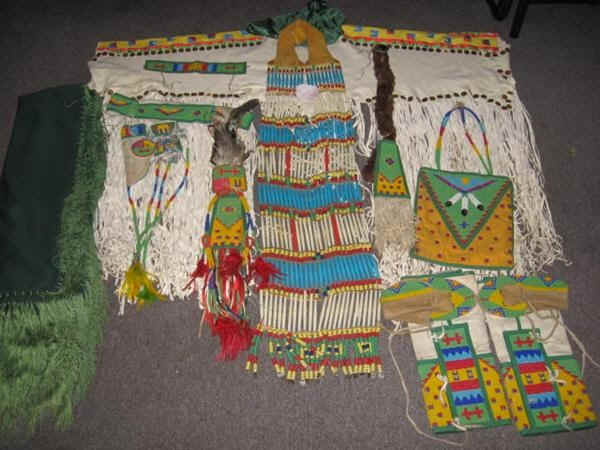
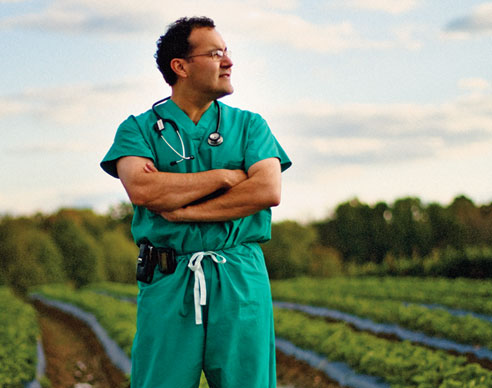
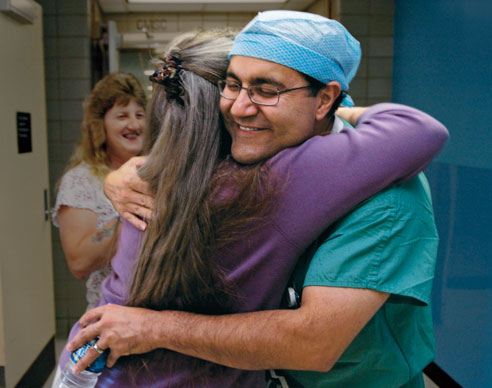

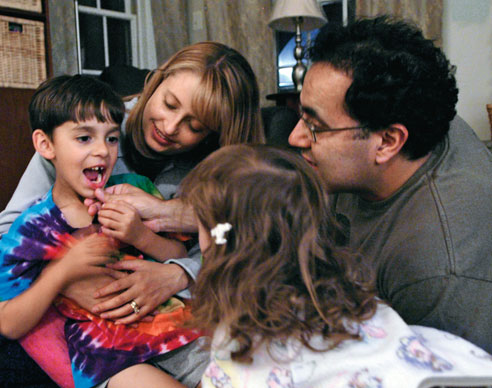
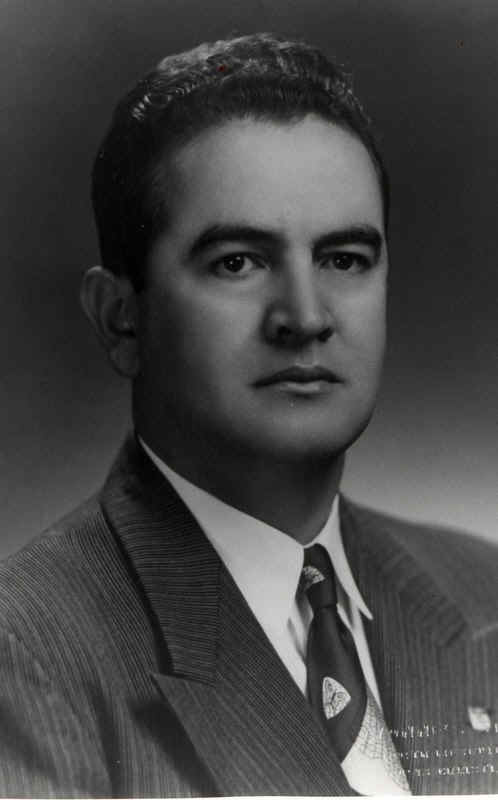 My papa represented different things to many people. To most he was a hero, to some a
rabble- rouser. "La Gente" affectionately called him "El Zorro Mexicano." On 9/3/1990 in an interview on the "Portada Show," the commentator introduced Dr. Garcia as "a physician,
an activist, a philanthropist, but above all, a rebel with a cause. "
My papa represented different things to many people. To most he was a hero, to some a
rabble- rouser. "La Gente" affectionately called him "El Zorro Mexicano." On 9/3/1990 in an interview on the "Portada Show," the commentator introduced Dr. Garcia as "a physician,
an activist, a philanthropist, but above all, a rebel with a cause. " Dr.
Jose Manuel de la Rosa is the Founding/Regional Dean for the Paul L.
Foster School of Medicine at
Dr.
Jose Manuel de la Rosa is the Founding/Regional Dean for the Paul L.
Foster School of Medicine at 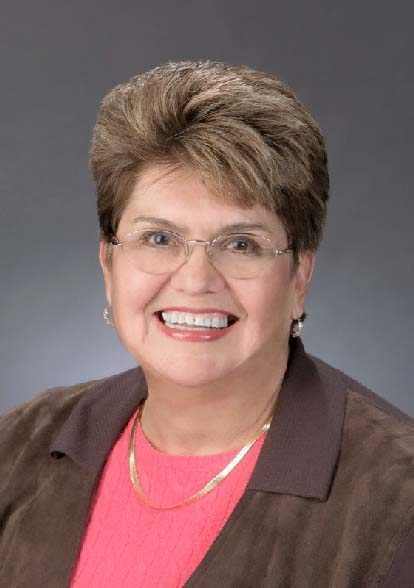
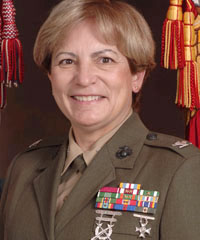 Today,
in 2008, there are more than 100,000 Hispanics serving on active duty
in all branches of the U.S. Armed Forces. This includes dozens of
commissioned officers and the first Hispanic woman general of the US
Marine Corps commanding Marines at Camp Pendleton in San Diego, CA.
Today,
in 2008, there are more than 100,000 Hispanics serving on active duty
in all branches of the U.S. Armed Forces. This includes dozens of
commissioned officers and the first Hispanic woman general of the US
Marine Corps commanding Marines at Camp Pendleton in San Diego, CA.
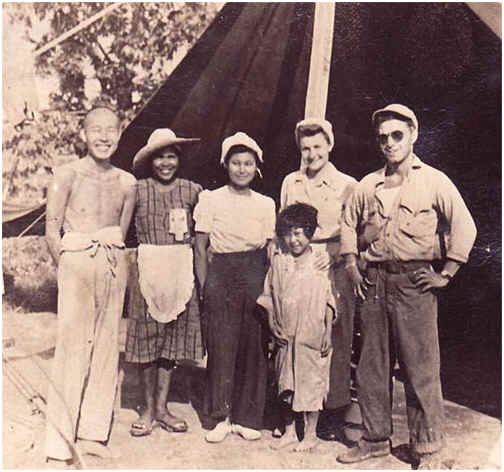
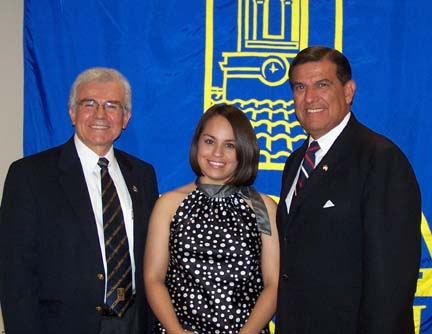
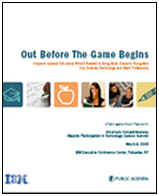 This
Public Agenda report, prepared for IBM's summit on "America's
Competitiveness: Hispanic Participation in Technology
Careers," is based on in-depth interviews with 19 key leaders
from vastly different fields and backgrounds. Nearly all of the
interviewees said that when it comes to Hispanic and Latino
students, the education pipeline is all but broken.
This
Public Agenda report, prepared for IBM's summit on "America's
Competitiveness: Hispanic Participation in Technology
Careers," is based on in-depth interviews with 19 key leaders
from vastly different fields and backgrounds. Nearly all of the
interviewees said that when it comes to Hispanic and Latino
students, the education pipeline is all but broken. 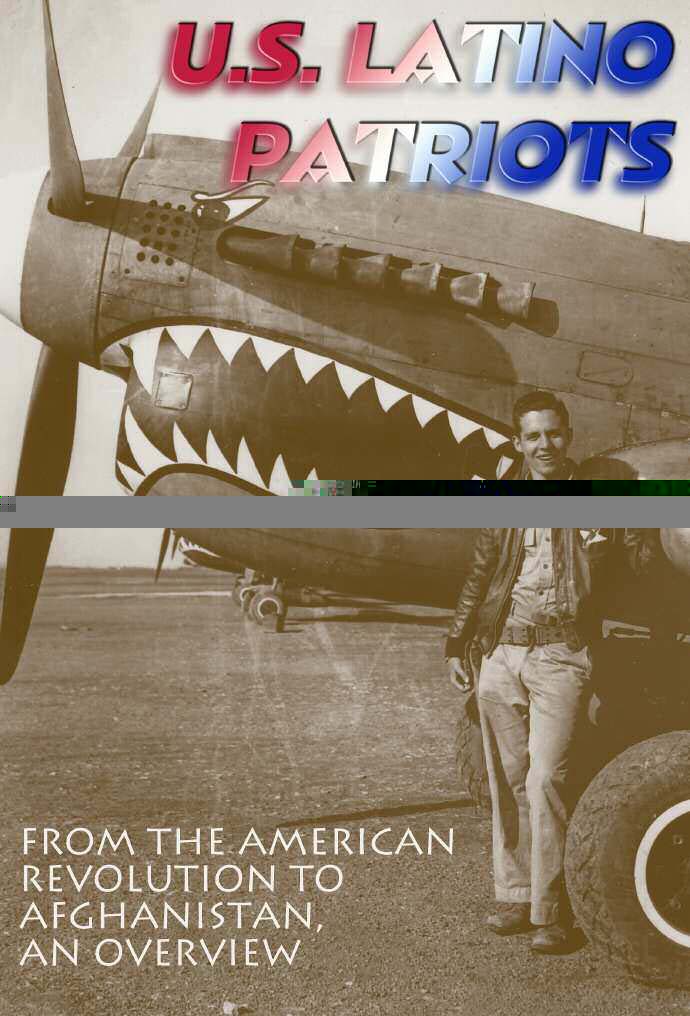
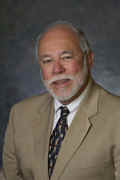 Refugio I. Rochin. "U.S. LATINO PATRIOTS " Julian
Samora Research Institute - Michigan State University e-book
series (2005): 1-58. Available for free downloading at:
Refugio I. Rochin. "U.S. LATINO PATRIOTS " Julian
Samora Research Institute - Michigan State University e-book
series (2005): 1-58. Available for free downloading at: 
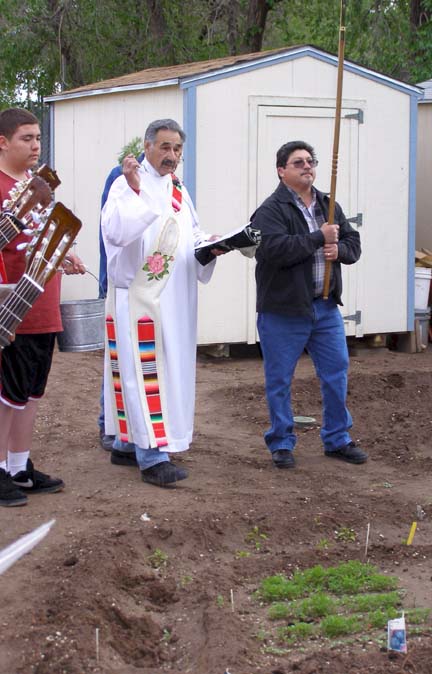
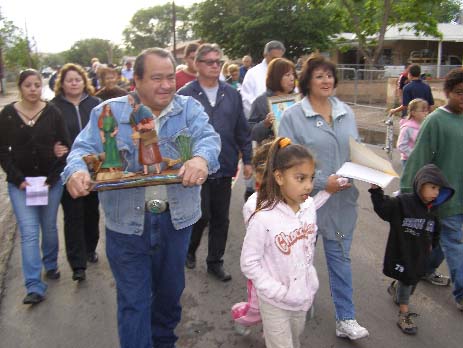 For
as long as people can remember, and beyond that time, the residents of
this area have conducted the Festival de San Isidro y Santa Maria de la
Cabeza. This year despite chilly temperatures and drizzling rain,
more than 50 people came together at the Holy Family Parish in Atrisco
to bless the acequia (irrigation ditch) waters and fields in the name of
San Isidro and Santa Maria de la Cabeza.
For
as long as people can remember, and beyond that time, the residents of
this area have conducted the Festival de San Isidro y Santa Maria de la
Cabeza. This year despite chilly temperatures and drizzling rain,
more than 50 people came together at the Holy Family Parish in Atrisco
to bless the acequia (irrigation ditch) waters and fields in the name of
San Isidro and Santa Maria de la Cabeza.
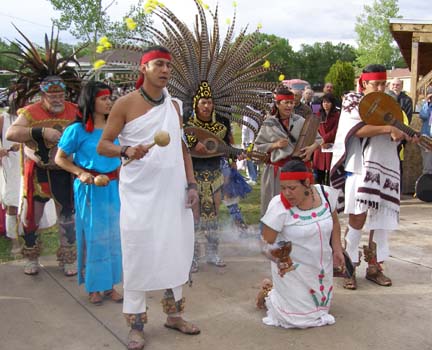
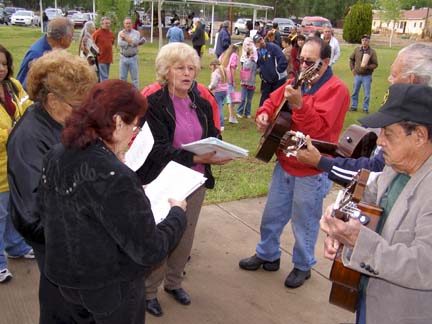
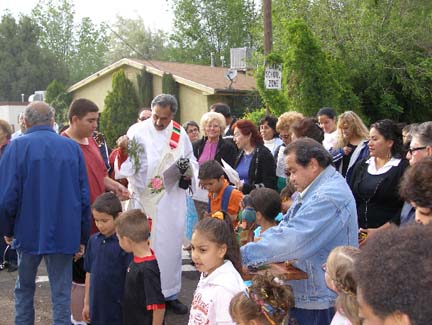 The procession made its way through the neighborhood to the acequia
where Deacon Abeyta blessed the water and then sprinkled water on the
participants who were gathered around the culvert that where the water
flowed from under the road.
The procession made its way through the neighborhood to the acequia
where Deacon Abeyta blessed the water and then sprinkled water on the
participants who were gathered around the culvert that where the water
flowed from under the road.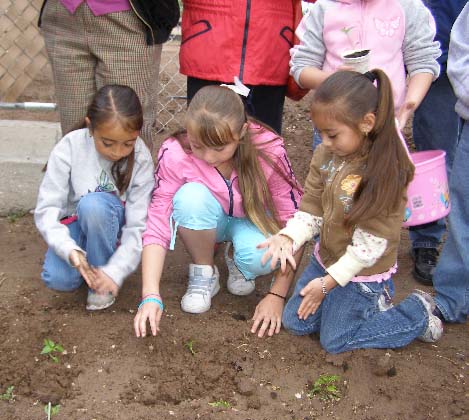
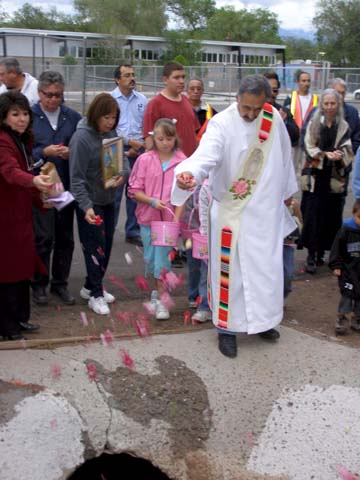

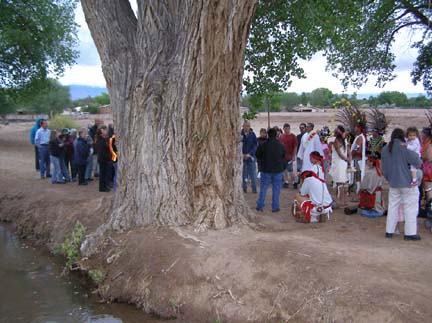

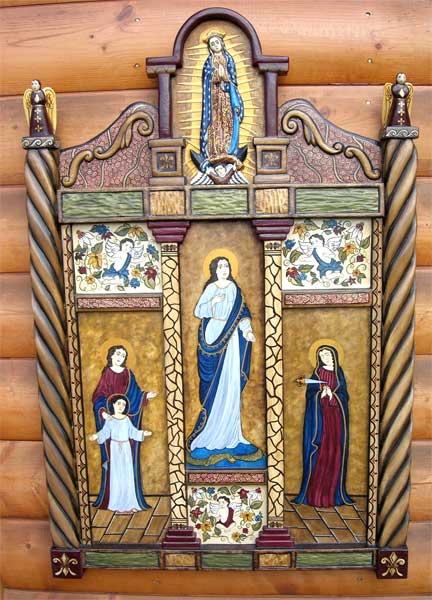
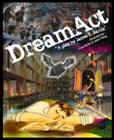


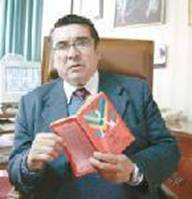
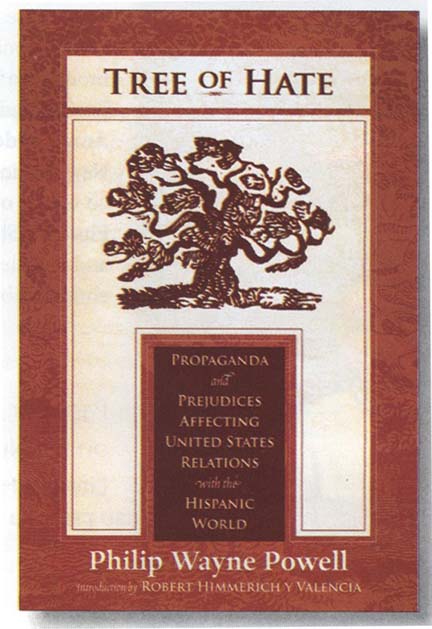
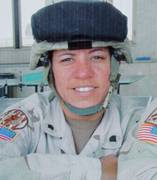
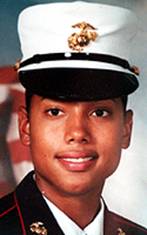
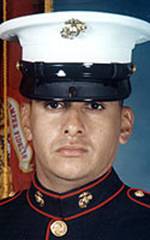
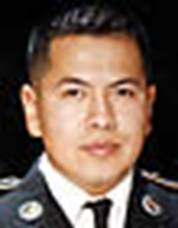
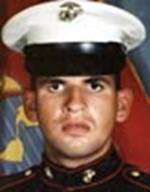
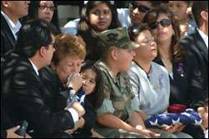
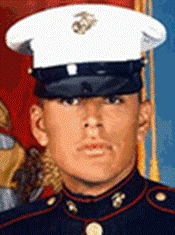
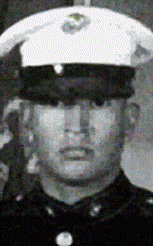
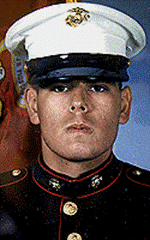


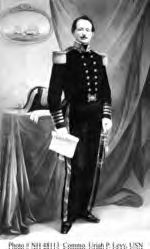
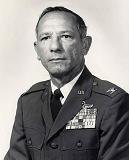

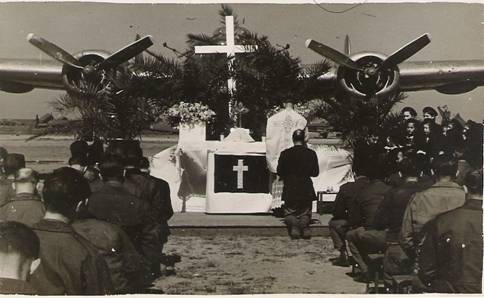


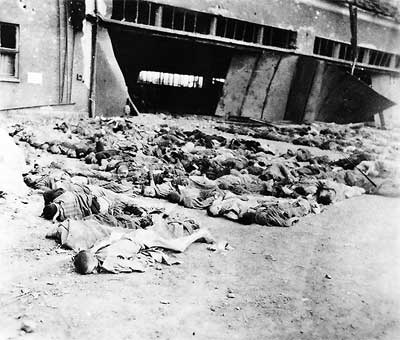


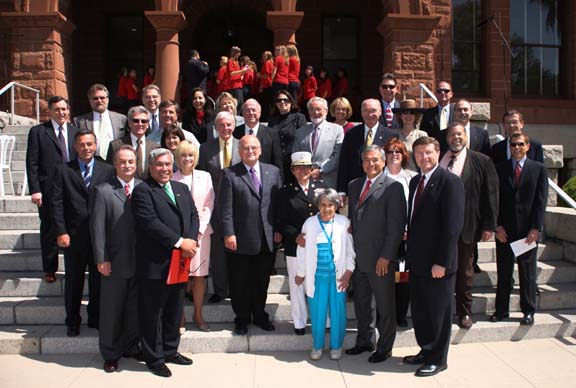
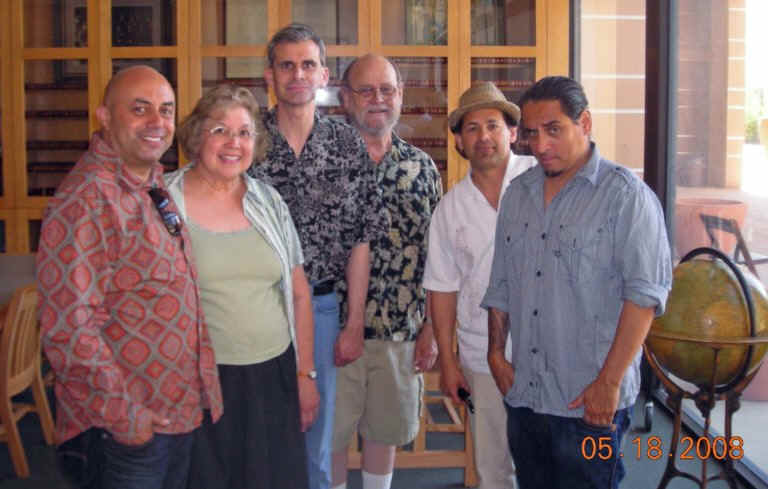
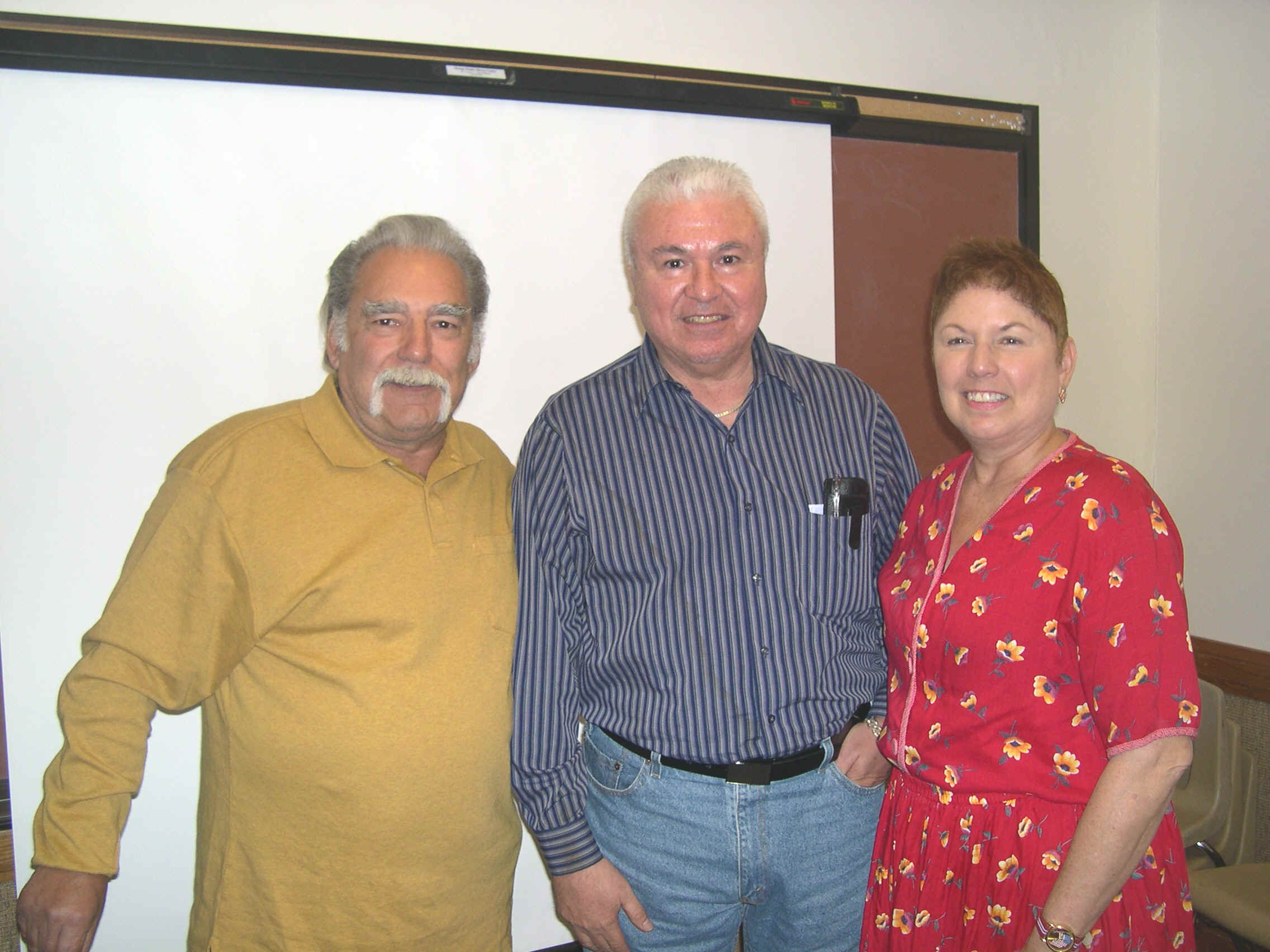
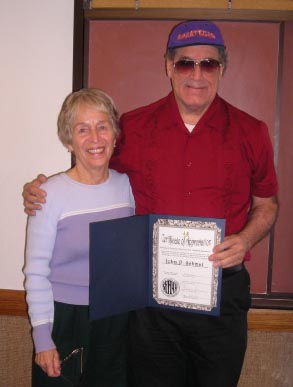 John
Schmal is another outstanding research. He has authored four books,
teaches family history classes, and is a frequent presenter throughout
California. John is a regular submitter to HispanicLinks and Somos
Primos.
John
Schmal is another outstanding research. He has authored four books,
teaches family history classes, and is a frequent presenter throughout
California. John is a regular submitter to HispanicLinks and Somos
Primos. 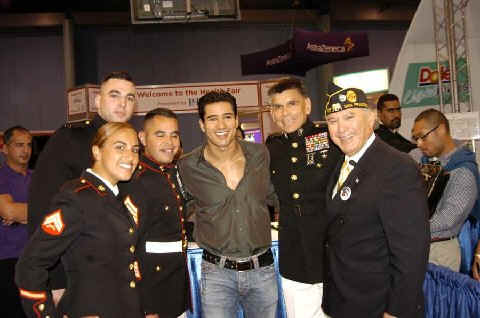
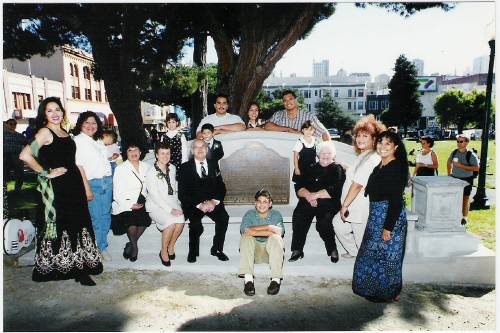

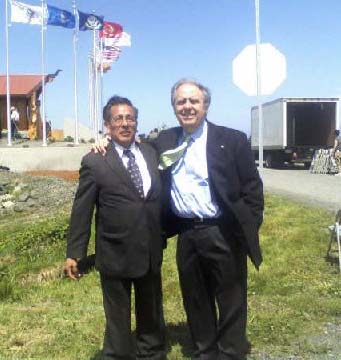
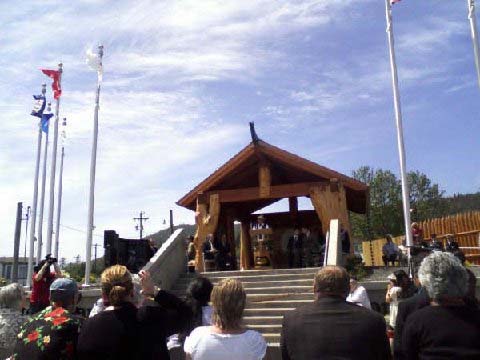
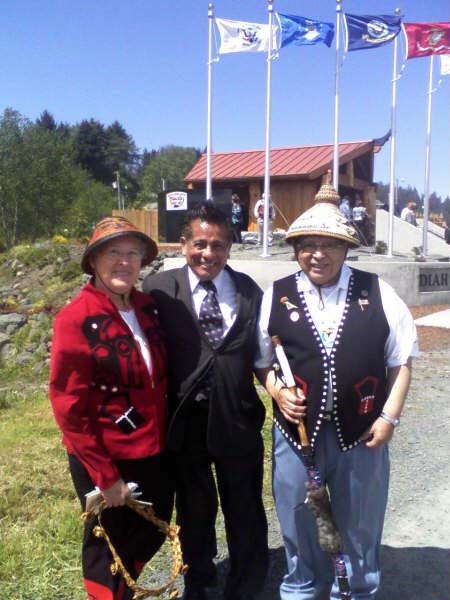
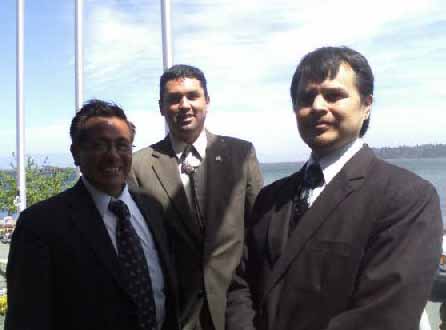
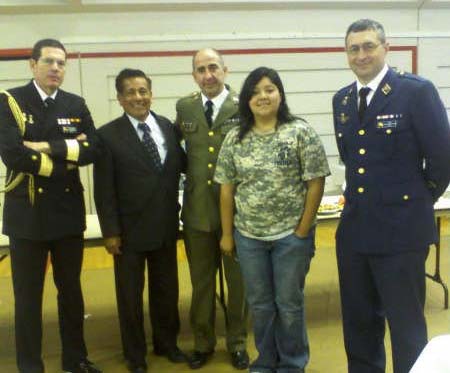
 The
Public Radio includes interviews includes many very touching personal
accounts.
The
Public Radio includes interviews includes many very touching personal
accounts. 

 The Jews of Yemen have always oriented themselves towards Israel throughout their history. The Silwa settlement in the late 19th century preceded the Aliyah Bilu (1881-1903.) The well-known Magic Carpet or "Eagles' Wings of 1949-1950, the major modern Yemen aliyah operation, is thus only one episode, albeit a significant turning point, in the history of Yemenite Jews in the Land of Israel. This exhibit will focus on the last Jews to make aliyah in 1992, with the considerable efforts of the then U.S. Senator Alphonse D'Amato to gain their freedom. Photographs, Sampson Giat 1992. In cooperation with the American Jewish Joint Distribution Committee.
The Jews of Yemen have always oriented themselves towards Israel throughout their history. The Silwa settlement in the late 19th century preceded the Aliyah Bilu (1881-1903.) The well-known Magic Carpet or "Eagles' Wings of 1949-1950, the major modern Yemen aliyah operation, is thus only one episode, albeit a significant turning point, in the history of Yemenite Jews in the Land of Israel. This exhibit will focus on the last Jews to make aliyah in 1992, with the considerable efforts of the then U.S. Senator Alphonse D'Amato to gain their freedom. Photographs, Sampson Giat 1992. In cooperation with the American Jewish Joint Distribution Committee. Upon the establishment of the State of Israel, new immigrants were sent to peripheral regions in order to settle the Israeli frontier and to shape the country's borders. In 1951 a group of immigrants from Asia and North Africa arrived, in the middle of the night, to a desolate ma'abara (transit camp) location in the Negev. In time they established the town of
Sderot. Today it is the target of ongoing terrorist rockets -- and yet it remains a unique and vibrant town.
Upon the establishment of the State of Israel, new immigrants were sent to peripheral regions in order to settle the Israeli frontier and to shape the country's borders. In 1951 a group of immigrants from Asia and North Africa arrived, in the middle of the night, to a desolate ma'abara (transit camp) location in the Negev. In time they established the town of
Sderot. Today it is the target of ongoing terrorist rockets -- and yet it remains a unique and vibrant town. 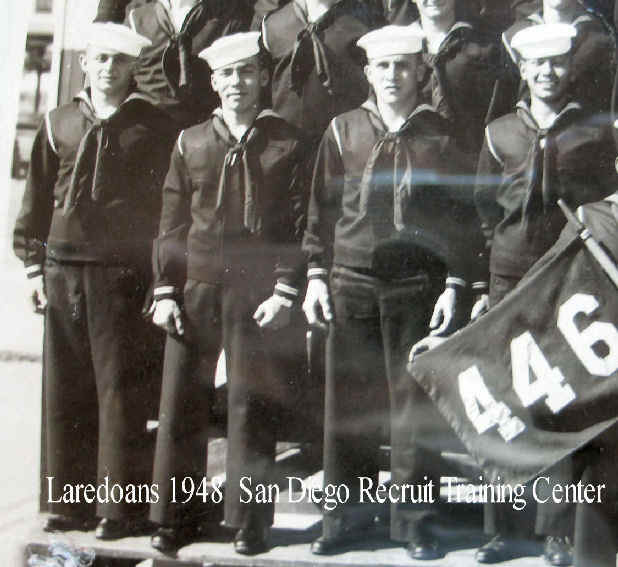
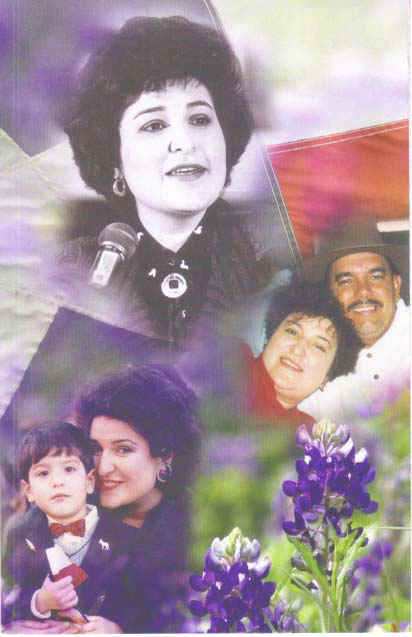 Lena
Guerrero, former State Representative and Texas Railroad Commissioner,
passed away in her sleep on Thursday, April 24, 2008 under the loving
care of her husband Lionel “Leo” Aguirre. Lena was a force of
nature and the center of her two Leo’s lives and that of her very
extended family and extensive network of friends and
Lena
Guerrero, former State Representative and Texas Railroad Commissioner,
passed away in her sleep on Thursday, April 24, 2008 under the loving
care of her husband Lionel “Leo” Aguirre. Lena was a force of
nature and the center of her two Leo’s lives and that of her very
extended family and extensive network of friends and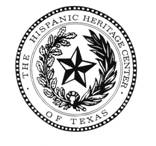 The
Hispanic Heritage Center of Texas
The
Hispanic Heritage Center of Texas
